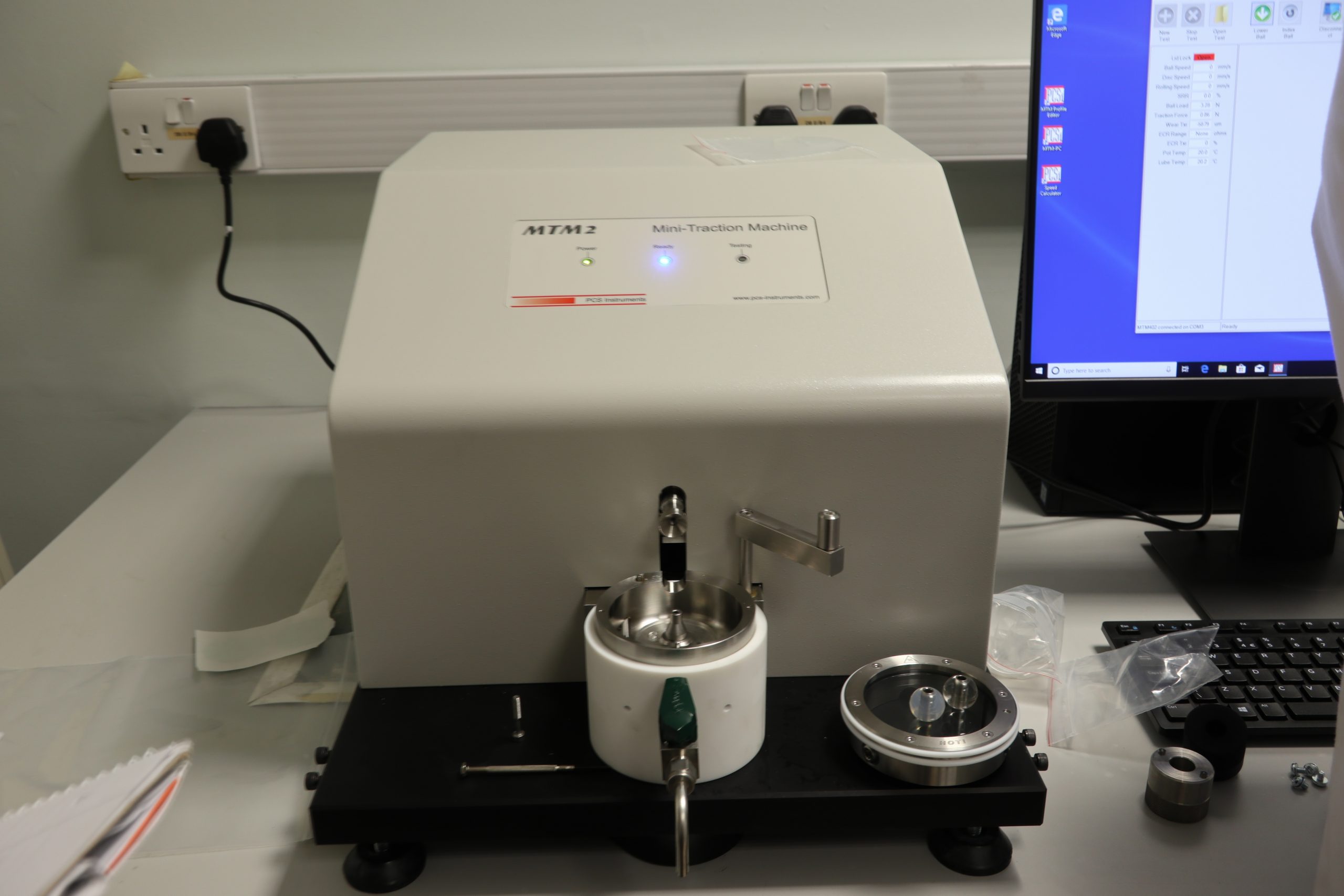
May 12, 2020, by Lexi Earl
Mini-Traction Machine (MTM-2): Tribometer / Soft Contact Tribometer
We spoke to Dr Gleb Yakubov about the mini-traction machine (MTM-2): tribometer used in Food Science for experiments and research.
Tell us about your research? What kind of things are you exploring?
In my group, we are interested in linking molecular and structural features of polysaccharides (polymeric sugars) with their functionality in foods, plants, and biomaterials. Despite ubiquity of polysaccharides, from cellulose and starch to complex hemicelluloses and pectins, little is known about their interactions at the molecular level. These molecular interactions lead to the most wondrous and economically vital sets of properties of polysaccharide assemblies. Unlocking the interaction mechanisms at the molecular level enables researchers to improve foods, enhance utilisation of biomass, and gain deeper understanding of plant physiology.
Currently, our main research focus is on understanding dietary fibre functionality in the gut and fibre interactions with the gut microbiome. In addition, through collaborations with industry, we utilise our expertise to investigate oral perception and oral processing of fibre-containing foods. We also contribute our expertise in structural characterisation to look at dietary fibre and constituent polysaccharides in their native state as part of plant cell walls and plant mucilages.

Dr Gleb Yakubov and colleagues at a training session for the tribometer
Tell us about the mini-traction machine? What does it do? How does it work?
MTM-2 enables measurements of lubrication, friction (tribology), micromechanics, and thin-film behaviour of polysaccharides and proteins. The unique adaptation utilised in our group is Soft Contact Tribology (SCT), a novel technique which compliments existing capabilities residing within the University of Nottingham in rheology (analysis of flow) and texture analysis, as well as enabling unique access to probing micro- and nano-mechanical properties of multi-phase complex fluids such as particle suspensions (e.g., ketchup, vegetable puree) and emulsions. At its core, the technique probes the friction between two soft surfaces separated by a layer of fluid. The use of soft surfaces mimics the oral environment where oral processing involves interactions with soft tissues such as that of the tongue. In addition to utilisation of SCT technique in a wide range of food systems from beverages to yoghurts and potato crisps, the SCT can be successfully utilised to characterise suspensions of plant particles, milled flours and other paste-like systems. The technique can also be utilised to probe the lubrication behaviour of plant proteins, polysaccharides and food materials such as oils, starches and emulsions.
More generally, the field of tribology (friction, wear, lubrication) is an interdisciplinary area with applications across foods, material science, chemistry, biological sciences and engineering. The proposed SCT facility will provide world-class infrastructure to serve broad needs across the University of Nottingham, as well as opening new avenues for industrial engagement with applications as far ranging as the development of medical devices and biomaterials, drug delivery, purification membranes, biofuels, 3D printing and polymer engineering.

How does this help your experiments?
MTM-2 enables measurements of lubrication, friction, micromechanics, and thin-film behaviour of polysaccharides and proteins. This allows us to address a broad spectrum of problems in a unique way that cannot be accessed through other instrumentation. For example, SCT became indispensable in the analysis of oral processing of food and oral care products, as well as the interaction of foods/oral care ingredients with saliva that impact texture, in use performance and sensory perception, as well as to analyse molecular mechanisms underpinning biological lubrication in animals (articular cartilage lubrication) and plants (root penetration through the soil).

Can other researchers make use of this equipment? If so, how?
Currently, the equipment is accessible on a collaborative basis and is being promoted internally through UNICAS, NDDS, and Beacons. Once the support environment from the technical team is set in place, MTM-2 will be made available through the Kit-Catalogue and to M5 universities via the Midlands innovation website.
No comments yet, fill out a comment to be the first

Leave a Reply